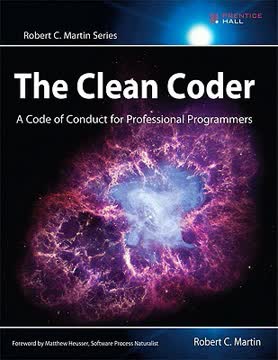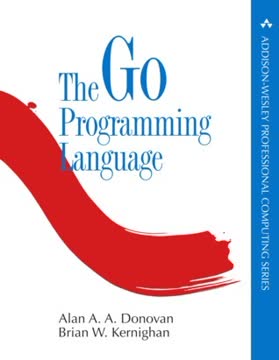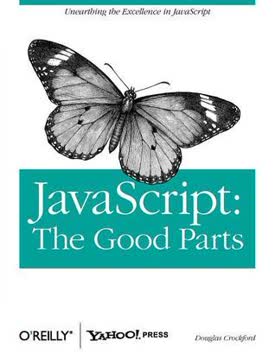Key Takeaways
1. Embrace Agile Principles for Adaptive Software Development
Software development is more like surfing—it's a dynamic, ever-changing environment.
Embrace change. Agile development recognizes that requirements and challenges are constantly evolving. Rather than attempting to freeze requirements or follow a rigid plan, agile teams adapt to changing circumstances. This approach allows for more responsive and customer-focused development.
Iterative and incremental. Develop software in short cycles, typically 1-4 weeks long. Each iteration should produce a potentially shippable product increment. This approach allows for frequent reassessment and course correction, ensuring the project remains aligned with business needs.
- Key agile practices:
- Continuous integration and deployment
- Regular customer demonstrations
- Adaptive planning
- Cross-functional teams
2. Prioritize Continuous Feedback and Iterative Improvement
Get feedback often. If your iteration cycle is quarterly or annually (which is too long), reduce it to weekly or biweekly.
Rapid feedback loops. Implement mechanisms for gathering feedback early and often. This includes automated testing, continuous integration, and regular demonstrations to stakeholders. Frequent feedback allows teams to identify and address issues quickly, reducing the cost and risk of changes.
Data-driven decisions. Use metrics and user feedback to guide development decisions. Track progress using tangible measures like working features rather than subjective assessments. This approach helps teams focus on delivering value and adapting to changing priorities.
- Feedback sources:
- Automated tests
- User demonstrations
- Code reviews
- Performance metrics
- Customer surveys
3. Write Clean, Expressive Code for Long-Term Maintainability
Write code to be clear, not clever. Express your intentions clearly to the reader of the code. Unreadable code isn't clever.
Clarity over complexity. Prioritize writing code that is easy to read and understand. This often means choosing simpler, more straightforward solutions over complex ones, even if they're less "clever." Clear code is easier to maintain, debug, and extend.
Expressive naming. Use meaningful names for variables, functions, and classes that clearly convey their purpose. Good names act as documentation, making the code self-explanatory and reducing the need for comments.
- Code clarity techniques:
- Consistent formatting
- Small, focused functions
- Descriptive variable names
- Minimal use of global state
- Avoiding premature optimization
4. Implement Robust Testing Strategies for Quality Assurance
Good unit tests warn you about problems immediately. Don't make any design or code changes without solid unit tests in place.
Test-driven development. Write tests before implementing features. This approach ensures that code is testable from the start and helps clarify requirements. It also provides a safety net for refactoring and changes.
Comprehensive test coverage. Implement a variety of testing strategies, including unit tests, integration tests, and acceptance tests. Automated tests should cover critical paths and edge cases, providing confidence in the system's behavior.
- Testing best practices:
- Automated test suites
- Continuous integration
- Mock objects for isolation
- Performance and security testing
- Regular test review and maintenance
5. Foster Effective Team Collaboration and Communication
Stand-up meetings keep the team on the same page. Keep the meeting short, focused, and intense.
Regular face-to-face communication. Hold brief, daily stand-up meetings to synchronize the team's efforts. These meetings should focus on progress, plans, and obstacles, fostering collaboration and problem-solving.
Shared ownership. Encourage collective code ownership, where any team member can work on any part of the codebase. This approach spreads knowledge, reduces bottlenecks, and improves code quality through diverse perspectives.
- Collaboration techniques:
- Pair programming
- Code reviews
- Knowledge sharing sessions
- Cross-functional teams
- Collaborative tools (e.g., wikis, chat platforms)
6. Balance Technical Debt with Pragmatic Solutions
Actively evaluate trade-offs. Consider performance, convenience, productivity, cost, and time to market.
Pragmatic decision-making. Recognize that every technical decision involves trade-offs. Evaluate options based on their impact on performance, maintainability, development speed, and business value. Sometimes, a "good enough" solution now is better than a perfect solution later.
Manage technical debt. Acknowledge that some technical compromises are necessary, but track and address accumulated technical debt. Regularly allocate time for refactoring and improving system architecture to prevent long-term issues.
- Balancing factors:
- Development speed vs. code quality
- Flexibility vs. simplicity
- Performance vs. maintainability
- Custom solutions vs. third-party tools
- Short-term gains vs. long-term sustainability
7. Cultivate a Culture of Continuous Learning and Mentorship
Be a mentor. There's fun in sharing what you know—you gain as you give. You motivate others to achieve better results. You improve the overall competence of your team.
Continuous learning. Encourage team members to stay current with new technologies and best practices. Allocate time for learning and experimentation, recognizing that ongoing education is crucial in the fast-paced software industry.
Knowledge sharing. Foster a culture where team members actively share their knowledge and experiences. This can include mentoring relationships, brown bag sessions, and internal tech talks. A team that learns together grows stronger together.
- Learning and mentorship activities:
- Tech book clubs
- Conference attendance and report-backs
- Internal hackathons
- Skill-sharing workshops
- Pair programming for knowledge transfer
Last updated:
Review Summary
Practices of an Agile Developer receives mixed reviews, with an average rating of 3.87 out of 5. Many readers find it useful for beginners and those new to Agile practices, praising its practical advice and easy-to-read format. Some appreciate its focus on both technical and interpersonal aspects of development. However, experienced developers find less new information. Critics note that some advice is common sense or debatable. Overall, readers value the book for its concise tips, real-world examples, and potential to improve development practices, despite occasional idealism and outdated technical examples.
Similar Books










Download PDF
Download EPUB
.epub digital book format is ideal for reading ebooks on phones, tablets, and e-readers.





